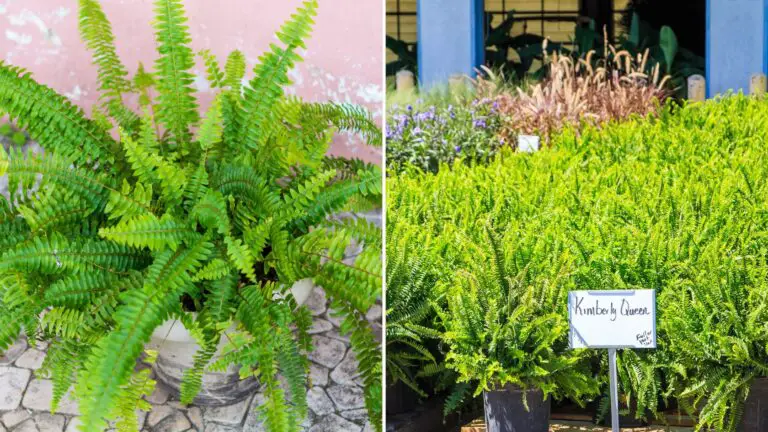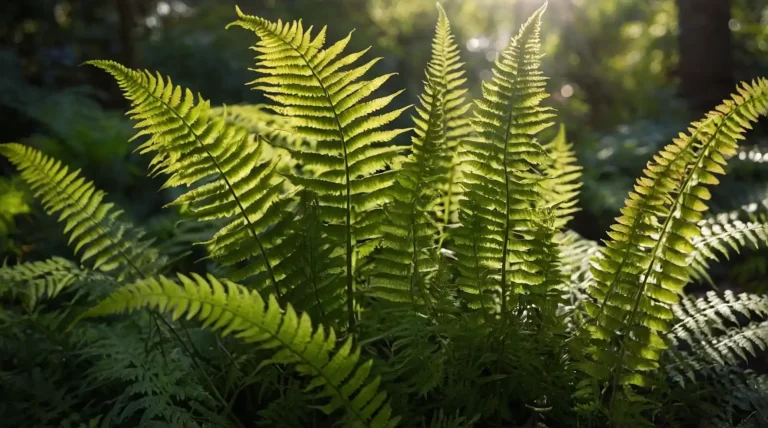Hay Scented Fern Habitat Information and How to Grow
Do you want such ferns that can cover your garden’s empty spot? Surely, Hay-scented ferns are one of the popular garden cover ferns that you’ve heard about.
In this article, I’ll talk about this Hay-scented fern’s overall characteristics along with their habitat information. After that, I’ll also give you tips about their basic growing conditions and their maintenance tips.
Side by side, I’ll also share ecological benefits and how you can plant this fern. Hopefully, you will be able to grow these low-maintenance fern plants in your garden.
Overview of Hay-scented Fern
- Botanical name: Dennstaedtia punctilobula
- Plants: Deciduous plants
- Native range: eastern North America
- Habitats: woods, open woods, or woodlands
- Shade requirements: full or partial shade
- Height: around 1 meter
- Soil: acid or neutral
- Soil type: moisture, well-drained
- Tolerance: dry soil, rabbit
- Hardiness zone: 3,4,5,6,7,8
Hay-scented ferns are yellow-greenish feathery ferns native to mostly North America. Apart from North America, these ferns are also visible in the US, Canada, Georgia, South, Wisconsin and Newfoundland etc area as well.
Hay-scented ferns tend to habitat on rocky slopes, old forests, and conifers of mountain forests. Mostly, they grow in those areas where they get forest edges and open canopies.
Their rapid growth tendency helps them to grow dense colonies wherever they are planted. Therefore, these ferns are mostly very useful for covering large areas in gardens or parks while contributing ecological benefits to the country.
However, they need proper maintenance otherwise it won’t take much to spread in the whole yard of your place or garden.
These ferns have a slight scent in their fronds, that’s why their name is the hay-scented fern. They also have other local common names like Eastern Hay-scented ferns and Boulder ferns.
These hay-scented plants have really nice fresh smells or aromas after being cut, which resemble freshly cut grass for a moment.
These Hay-scented ferns usually grow up to 2 to 3 feet long in height. They tend to grow from their rhizome’s slenderness. Thus, slenderness helps these ferns to grow rapidly through their rhizomes.
These hay-scented ferns usually live for 10 years with their rapid growth.
Growing and Caring Hay-scented Ferns
Here are the ideal criteria that you need to follow to grow and plant these Hay-scented ferns at your house.
Light Requirements
These ferns need partial shade to thrive. However, like every other fern, these ferns also don’t like direct sunlight.
That is why keep your ferns away from giving direct sun exposure to them. It can burn their fronds or can scorch the foliage.
However, they can grow in full sun but their growth will not be as lush as in partially shaded places. So if you want to have lush greenery, keep them under partially shaded places to thrive.
Soil Mixture
In order to prepare your Hay-scented fern’s soil, make it more peat-based soil. Also add perlite, peat moss, leaf mold, vermiculite, loamy, etc in the soil. Make the soil slightly acidic so that they can grow robustly.
You have to make soil with rich ingredients. And so, the soil must have a proper drainage system. For your outdoor asparagus ferns, you need to make the soil slightly acidic and it also should have well-drained soil so that the extra water can soak in the soil thoroughly.
Besides, you need to keep them in pots that have drainage holes. So that the excessive water can be drained out with that hole.
Water
As they can tolerate sun and need minimal care; so weekly watering would be a generous amount to give. Still, it depends on the climate you are living in.
If the climate is too hot, then you can water your Hay-scented ferns twice a week. Just keep the soil moist and damp, not watery.
Temperature and Humidity
These Hay-scented ferns like to be around 0° to 32°C in the atmosphere. They prefer a temperate climate to thrive just like their native habitats. However, their maximum tolerance temperature is -32°C.
If the temperature goes down below that level, they might not survive in that climate. Try to maintain warm temperatures around your fern plants.
If you have a greenhouse or shady porch then your indoor plants will bloom in an abundant way in summer seasons.
Don’t give sudden changes in the atmosphere that can give your plants sudden disorienting atmospheric conditions. It might have an impact on their cladodes to drop as well.
Fertilizer
For fertilizing your Hay-scented ferns, normal all-purpose fertilizer would do fine for them. Just their growing season, you need to feed them on a weekly basis.
If you observe that your Hay-scented fern’s color is becoming pale, then apply fish emulsion fertilizer to them. This fertilizer will bring back their lush greenery foliage with a little time gap.
Pruning and Trimming of Hay-scented Fern
Since they are quite invasive plants, they will cover the whole place within a short period of time. If you don’t want to cover such places then you need to trim their edges and stop their unwanted growth.
Later winter or spring would be the perfect time for pruning your Hay-scented ferns. Since spring is their growing season, therefore their natural life cycle will automatically help them to grow faster than the usual one.
In those times, you can cut off their damaged, dead, and unwanted fronds. After cutting back those fronds and extra edges, you need to water your ferns first. It will immediately give your ferns hydration.
Benefits of Hay-scented Ferns
Well, these Hay-scented ferns are not very sensitive to pests and diseases. They are mostly pests and disease-free ferns since they don’t have any common issues.
On the other hand, these ferns are very effective for your garden and can deter your garden’s problems. You can plant these ferns to cover your garden’s empty spaces which will give your garden a forest atmosphere.
Also, their scent is quite irritating for deer and rabbits. So you can also plant these ferns to resist these animals.
How to Plant Hay-scented Ferns
Certainly, you can plant these ferns via two methods. One is the spore-collecting process and another one is the division process. Generally, the division process is quite simpler and easier than the spores method.
You just need to divide the roots in half and plant those parts into different parts in your garden with new potting soil. Then you are good to go to have new Hay-scented plants in your garden.
However, if you are interested in doing something more exciting and challenging, then you can use the spores-collecting process.
In this process, choose your mature Hay-scented ferns and collect the spores from the beneath fronds. Then prepare the potting soil with peat moss, perlite, vermiculite, sand, leaf mold, and a lot of organic compost.
After mixing the soil, you just need to take a new container or pot. Then fill the pot with your potting soil and spread the collected Hay-scented spores there. Put these jars or pots in a shaded place to thrive.
Within a few weeks, you’ll notice shoots coming through the soil surface. Once these shoots are established, you can replant them in your garden or in a pot as well.
Afterward, just follow the regular routine to make your Hay-scented ferns thrive.
Wrap Up
In short, Hay-scented ferns are renowned plants in native America. Because of their ecological benefits, these invasive ferns become popular and very frequently planted in many places.
By giving them their ideal atmosphere, you will also be able to grow and plant these Hay-scented ferns in your garden.







